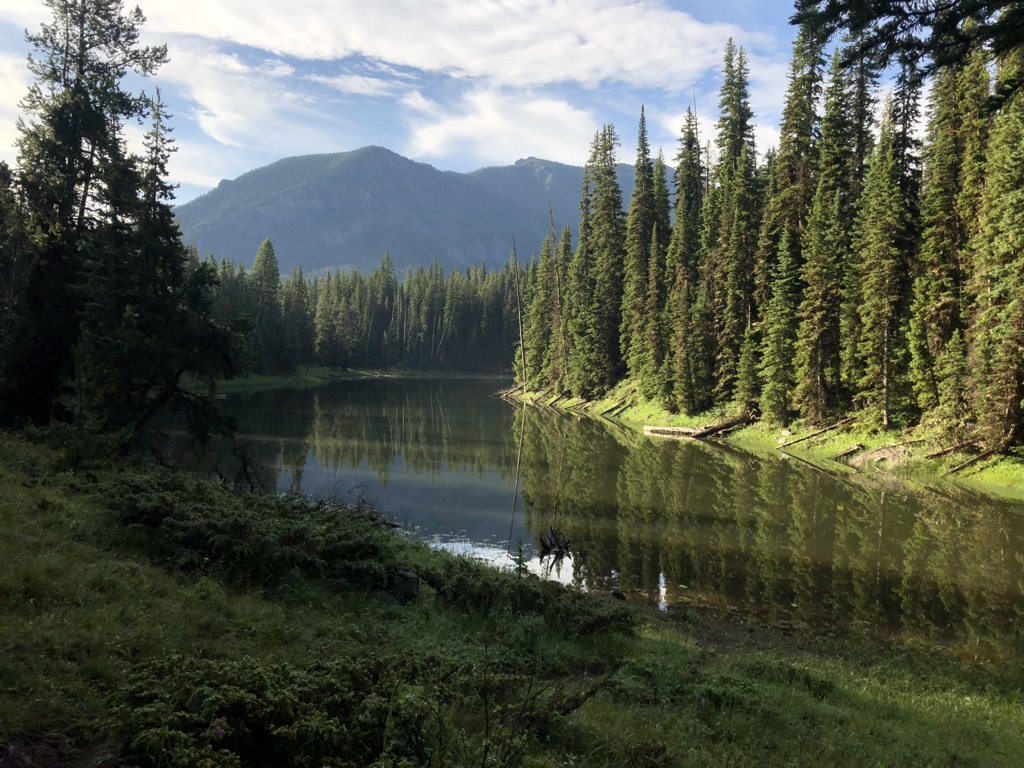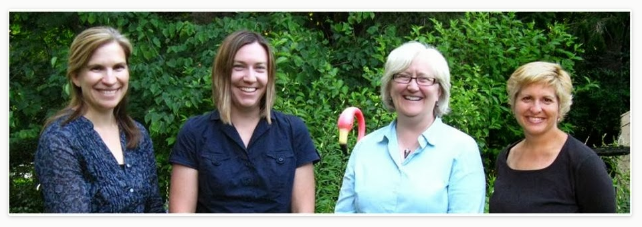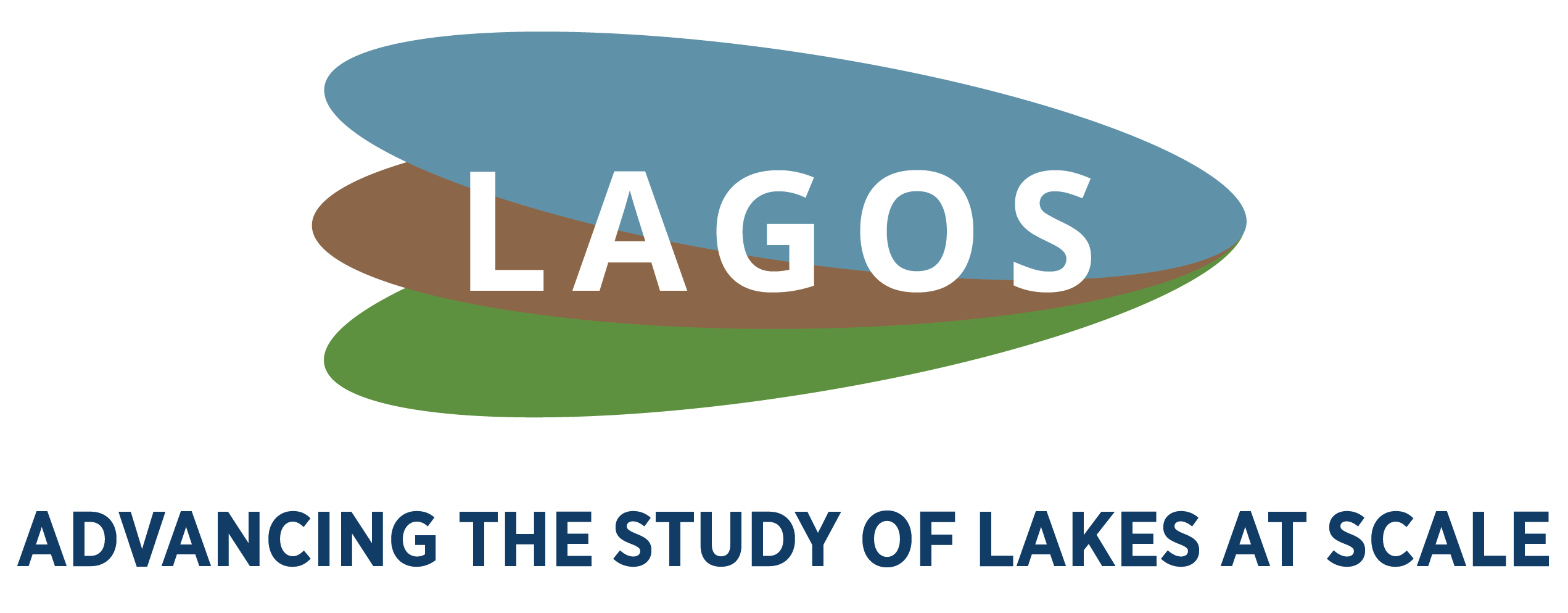
History & Motivation
History of and Motivation for the Development of LAGOS
LAGOS was created in response to:
- the urgent global need to understand the factors that affect lake chemical, physical, and biological properties and their associated ecosystem services and
- the challenges faced by U.S. States and Tribal agencies that have a mandate from the U.S. Environmental Protection Agency to manage and set standards for the water quality of all lakes within their boundaries.
One of the many challenges with such a mandate is understanding how the water quality in thousands of lakes within a geographical area responds to a wide range of human stressors (e.g., land use, pollution, climate change). Unfortunately, the scientific understanding of lake water quality has historically been conducted on a relatively small number of lakes.
Therefore, in the early 2000’s, we (and other scientists) began to broaden the view of how we study lakes from that of intensively studying individual lakes (like a medical doctor treats individual patients), to studying lakes at the population level (like an epidemiologist studies populations of people). This approach of studying populations of lakes is called landscape limnology (thanks to Dr. Wayne Wurtsbaugh for coining this phrase) and it allows us to ask questions about how hundreds to thousands of lakes are distributed across space and/or through time and why some lakes respond differently than others to stressors such as climate change.
Landscape limnology emerged in the early 2000’s alongside increasing computing power (and decreasing price), increasing availability of publicly-accessible geographic information system databases, and the maturation of landscape ecology (and then the emergence of macrosystems ecology in the 2010’s) that provided the intellectual foundation for the broad-scaled understanding of ecological systems.
When conducting landscape limnology, researchers are often challenged by the fact that lakes are usually sampled in limited geographic regions and often for limited periods. In addition, there are rarely sufficient data about the many different ecological context factors that influence lakes at multiple scales of space and time.
To address these challenges, scientists often take one of three approaches whereby they apply knowledge gleaned from: sampled lakes to those that have yet to be sampled in an area (i.e., extrapolation), local-scaled studies to regions or the globe (i.e., scaling up), or past or current conditions to predict how lakes will respond to pressures through time (i.e., forecasting) (Figure 1 from Cheruvelil & Soranno 2018).
These three approaches require extensive research infrastructure including in-lake data from hundreds to thousands of lakes across large geographic extents and time periods and information about the natural and human contexts of individual lakes across broad spatial extents (i.e., multi-scaled ecological context).

Figure 1. Three strategies ecologists use to address a wide range of broadscale ecological questions often requiring data-intensive methods. (From Cheruvelil & Soranno 2018)
This is where the LAGOS research platforms come in. We compiled many lake and environmental datasets into two integrated research platforms called LAGOS-NE and LAGOS-US to provide the open-access research infrastructure for interdisciplinary and broad-scale studies of lakes that can inform lake management, policy, education, and outreach.
During the construction of the LAGOS research platforms, we realized that not only did our work take a different approach to lake ecology research, we needed to develop, apply, and foster new methods, tools, and cultures to enable this board-scale and population-level lake research to proceed (Figure 2 from Cheruvelil & Soranno 2018).

Figure 2. The synergies resulting from the combined use of data-intensive, open, and team science to answer twenty-first century ecological questions. (From Cheruvelil & Soranno 2018)
The Origins & Funding of LAGOS
The creation of LAGOS was supported by several funding mechanisms reflecting its historical focus on water quality at the scale of individual U.S. States and Tribes, and the more recent expanded focus on national-scale interdisciplinary freshwater research. Although the scale and scope of our work has expanded over the past two decades, we built LAGOS with the idea that it can be used by U.S. States and Tribes to help manage and conserve lakes, including setting lake water quality standards.
The 2000’s – Building the foundation of landscape limnology

Patricia A. Soranno, Kendra S. Cheruvelil, Katherine E. Webster, Mary Tate Bremigan (L-R). Circa 2007
At the start, there were four of us (depicted above) who decided to expand our more traditional research programs that focused on relatively small numbers of lakes in relatively small geographies (e.g., eight lakes in southern Michigan and lake chains in Wisconsin) to expand to regions of hundreds of lakes in Michigan, to thousands of lakes the entire state of Michigan.
In our early work, we engaged with state and Tribal environmental agencies in Michigan and Wisconsin to help build understanding of the condition of lakes and ways to best support state and Tribal lake management (see funding sources below).
- Michigan Department of Natural Resources – Fisheries Division, $183,694. Managing Michigan Lakes: Evaluating Effects of Watersheds and habitat perturbation on Lake Resources. PI’s: Bremigan, M.T. and P.A. Soranno. October 2002-2006.
- USGS-Water Quality Grants, $15,000. Water quality trends of Michigan inland lakes and their relationship to ecoregions:1974-2001. PI: P.A. Soranno, P.A. March 2002 – March 2003.
- Michigan Department of Natural Resources – Fisheries Division. Developing a lake classification system for Michigan inland lakes. P.A. Soranno, P.A., M.T. Bremigan, K. Wehrly and J.E. Breck. 2004-2006.
- Michigan Department of Environmental Quality – Great Lakes Environmental Center, $309,447. Nutrient criteria development support. PI’s: R. Jan Stevenson and P.A. Soranno. 2005-2006.
- Michigan State University–Center for Water Sciences Venture Grants Program. WETLAKE Project: effects of wetland type, extent, and connectivity on lake chemistry. P.A. Soranno and C. Yansa. 2008-2009.
- Environmental Protection Agency Region 5, section 106, Clean Water Act. Use of the BTPM framework to develop nutrient criteria for lakes of the Fond du Lac Band and the Grand Portage Band of the Lake Superior Chippewa. Subcontract to P.A. Soranno. 2009 – 2010.
- U.S. Environmental Protection Agency, 205J Funds, Department of Environmental Quality: Revision, update, and validation of the lake-specific model for establishing expected nutrient conditions in Michigan lakes. K.S. Cheruvelil, P.A. Soranno; in collaboration with R. Jan Stevenson 2012 – 2014.
This state-wide work helped us understand the gap in infrastructure to conduct research at a multi-state scale (e.g., the northeastern U.S.). We began studying lakes at these broader spatial extents when we were funded to do research to inform the U.S. EPA’s first-ever national lake assessment in 2007. This research included ~2,500 lakes > 10ha in surface area within six U.S. states – Iowa, Wisconsin, Michigan, Ohio, New Hampshire, and Maine – and was conducted by a team of mainly aquatic ecologists.
- U.S. Environmental Protection Agency, Office of Wetlands, Oceans and Watersheds, National Lakes Assessment Program (NLAP). A hydrogeomorphic lake classification system for refining lake assessment at multiple spatial scales. P.A. Soranno, K.E. Webster, M.T. Bremigan and others. 2005-2007.
The 2010’s – Expanding ‘landscape limnology’ into ‘macrosystems ecology’
Our work in the early 2000’s started us down a path of understanding that the research infrastructure needed for broad-scale study and management of lakes (and ecology more broadly) was both technical and relational. Therefore, we created an interdisciplinary team and built relationships with a wide range of people, including state and Tribal agency personnel, to compile and integrate data across states, as well as researchers across disciplines, such as computer scientists, geographers, and bioinformatics professionals. This work was funded by the U.S. NSF when they started a new program out of Emerging Frontiers called Macrosystems Biology that was designed to facilitate biological research at the scales of regions to continents.

Phase one of this work created LAGOS-NE, which includes ~50,000 lakes > 4 ha in 17 U.S. states and Tribal lands therein. LAGOS-NE was created by a team of ~12 aquatic ecologists, geospatial and database experts, and data scientists (above). Leading a team of 12 required us to engage with the emerging subdiscipline of Science of Team Science that examines how scientific teams organize, communicate, and conduct research to achieve breakthroughs that would not be attainable by either individual or additive efforts. It was also facilitated by the cultural changes that were happening in ecology about the role of big data (or data-intensive) science in ecology. In fact, we learned so much about how to effectively facilitate team science and the importance of thinking broadly about how scientists work that we published papers about these topics. Some of our team played a major role in leading the development of this nascent sub-discipline of ecology by co-editing a special issue on macrosystems ecology published in 2013 that articulated the novel aspects of macrosystems ecology related to: big data in ecology; the importance of information management; quantitative approaches for macrosystems ecology; the theory that underlies the field; and creating high-performing collaborative teams.

Phase two of this work created LAGOS-US, which includes ~500,000 lakes > 1 ha in all 48 conterminous U.S. states, Washington D.C., and the Tribes lands therein. LAGOS-US was created by a team of ~16 aquatic ecologists, geospatial and database experts, and even more data scientists (above). This phase was facilitated by the push for and proliferation of open science principles and tools in ecology (e.g., FAIR principles and data repositories such as the Environmental Data Initiative) and cultural shifts that shifted credit practices such as the writing authorship policies and author contribution paragraphs for multi-authored papers, giving credit for products in addition to peer-reviewed journal articles (e.g., publishing code and data), and the establishment by many scholarly journals of a new type of peer-reviewed paper for publishing (e.g., data article in Limnology and Oceanography Letters). This phase of work was funded by the U.S. NSF in its Biology Directorate through the Macrosystems Biology and NEON-Enabled Science (MSB-NES) Program.
- National Science Foundation (EF-1065786, EF-1065649, EF-1065818). 2011-2016. P.A. Soranno, K.S. Cheruvelil, E.H. Stanley, J.A. Downing, N.R. Lottig, P-N. Tan.
- National Science Foundation (DEB-1638679, DEB-1638554, DEB-1638539, DEB-1638550)). 2016-2021. KS Cheruvelil, PA Soranno, P-N Tan, J Zhou, EH Stanley, C Gries, NR Lottig, T Wagner, E Hanks, E Schliep.
The 2020’s
Despite decades spent building research infrastructure, we were consistently surprised by how long it took to build the LAGOS research platforms. In particular, documenting our methods to make our products publicly available took a long time. Of course, the CV-19 pandemic also slowed the completion of our work that continued into the 2020’s, with the final LAGOS-US products being made publicly available in 2024. As we neared completion of the LAGOS-US platform, we began to devote more time to answering scientific questions about lakes by analyzing some of the rich data stores in both LAGOS-US and LAGOS-NE. Therefore, this decade includes both the release of key data products as well as science publications about lakes at broad scales of time and space (see publications list).
The Future of LAGOS
- Creating and applying new broad-scale knowledge about lakes: The LAGOS platforms can facilitate much research to better understand the condition of lakes and population-level responses to environmental changes at broad scales of space and time. Although the teams of people who built LAGOS will likely continue to ask and answer science questions, the power of LAGOS is that anyone, anywhere can do so. Such knowledge can then inform lake and landscape management and conservation.
- Improving accessibility of the LAGOS platforms: When we built LAGOS-NE, we created an R package (LAGOSNE) to support the use of the platform. However, LAGOS-US is orders of magnitude bigger and more complex, and although it is publicly available on EDI, it is not as accessible for users as we want it to be. And, LAGOS-NE and LAGOS-US are not as easy to combine for continental-scale lake research as we would like. Therefore, we will seek new funding to do this important work that was beyond the scope of previous grants. For example, we would like to create an R package, web tutorials, visuals that will make lake research at scale both accessible and useable by other researchers.
- Future users extending and expanding LAGOS: We built the LAGOS platforms to be extensible by any researcher. We look forward to other researchers building additional LAGOS modules and snapping them into the LAGOS platform, much like LEGO(r) bricks. These new modules could be focused on variables of interest (e.g., LAGOS-US-exotics) and/or could be for other countries/continents. In addition, because the underlying data that LAGOS were built upon are always improving, LAGOS data products must be updated in the future. Some of the researchers who built LAGOS may participate in expansions and updates, but we built LAGOS for the research community, and it will be up to that community to continue to build it, if it is valuable. We look forward to consulting with those interested in doing this work.
Photo Credit: Crescent Lake, Bozeman, MT. JDV
